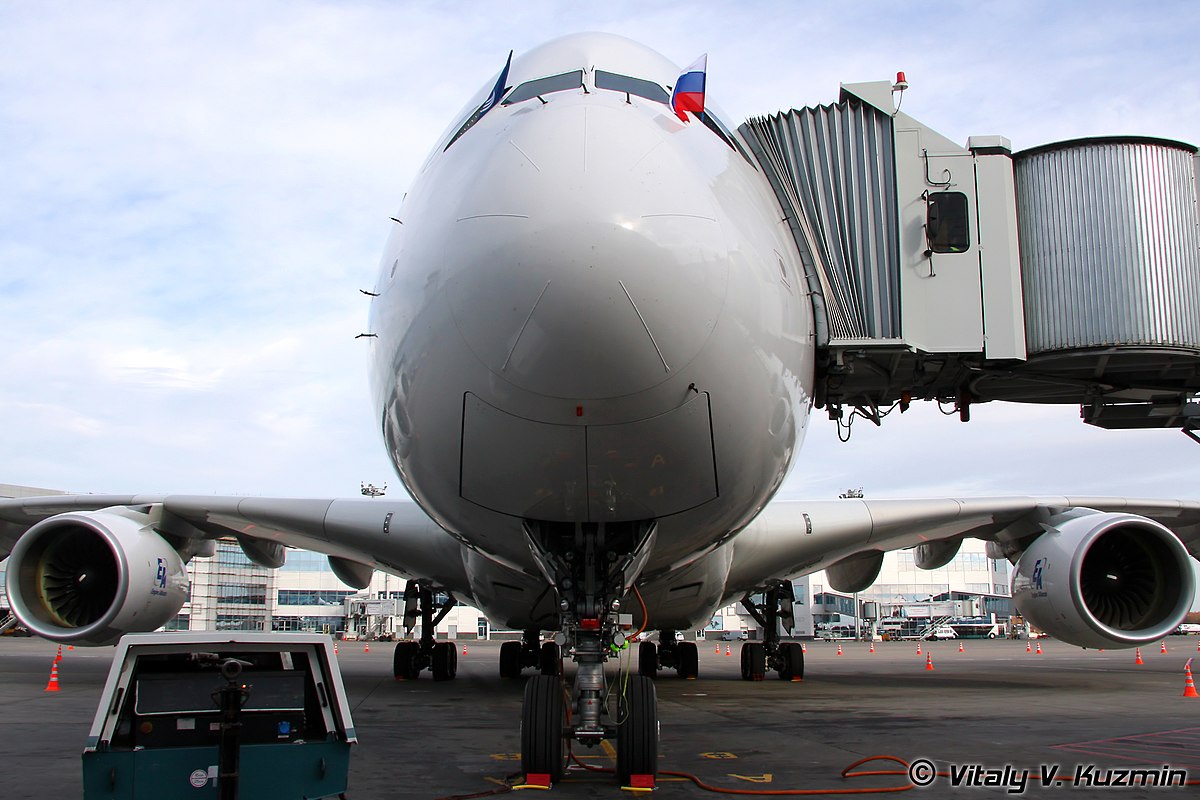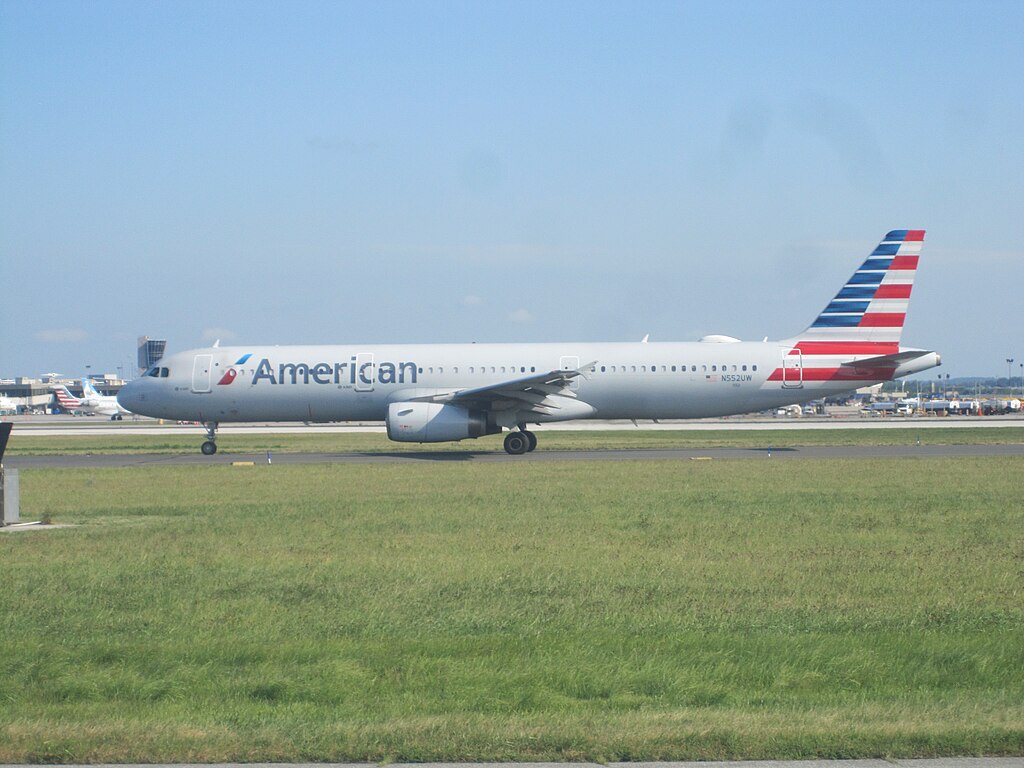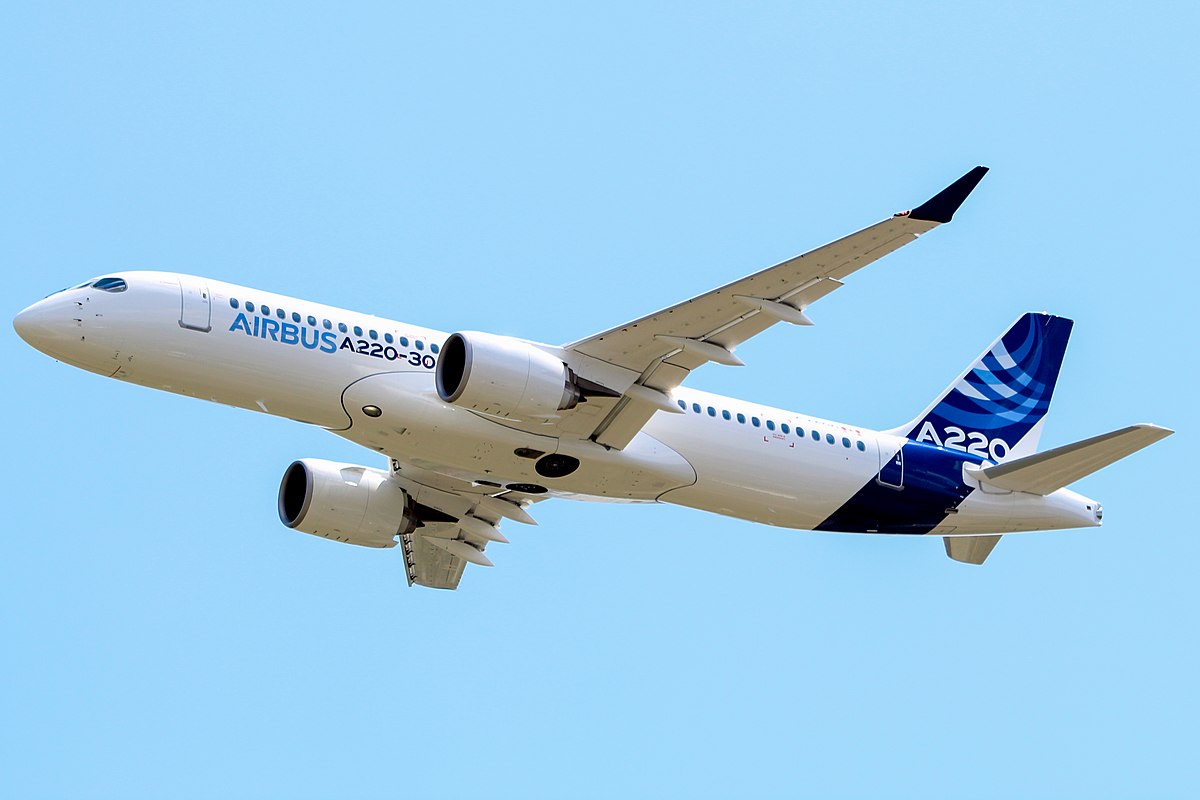Airbus A380 is the biggest passenger aircraft (alongside being the only double decker passenger aircraft) ever made. The longest non-stop flight in the world between Singapore Changi Airport (SIN) and John F. Kennedy International Airport (JFK) spans more than 9,500 miles and is conducted suing the Airbus A350-900 ULR. The longest one-stop flight in the world takes place between Singapore Changi Airport (SIN) and George Bush Intercontinental Airport (IAH) via Manchester Airport (MAN) and is conducted on the A350-900 as well.

Photo: Vitaly V.Kuzmin/ Wikimedia Commons
Looking at these three pieces of information, one might feel that Airbus, one of the world’s leading aircraft manufacturers, follows a systematic approach to naming its aircraft models. After all, all the three aircraft types we have discussed above start with the letter A and the number 3. This might feel similar to the naming convention of Boeing, whose aircraft model starting with 7 (e.g., 737, 747, 787). Are there any historical, strategic, or technical reasons why Boeing’s biggest competitor, Airbus has aircraft models start with the number 3? And has this numbering system has contributed to the brand’s identity? Let’s find out.
The Origins of the Airbus Numbering System
Airbus was founded as a European aerospace consortium in the 1970s. It was hoped that the aerospace manufacturer would compete with dominant American manufacturers like Boeing, McDonnell Douglas, and Lockheed. The first aircraft produced by this company that was formed after France and west Germany signed up for a mutual venture was the A300, which competed with the each of the widebodies produced by the three rivals we have discussed before:
- The Boeing 747, the Queen of the Skies
- McDonnell Douglas DC-10
- Lockheed L-1101 TriStar
The A300 was the only wide-body aircraft having two engines. the 747 was equipped with four engines, while the other two above had three engines. Let’s take a look at the specifications of the first aircraft produced by Airbus:
| Engines | 2 General Electric (GE) CF6-50A high-bypass turbofan engines |
| Maximum Take-Off Weight (MTOW) | 132,000 kilograms (291,010 lbs) |
| Speed | Mach 0.78 (450 kn; 833 km/h; 518 mph) at 35,000 ft (11 km) |

Photo: New York-air|Wikimedia Commons
So, what is the Significance of “A” and “3” in A300
Unlike Boeing whose aircraft model start with the number 7 for it naming conventions of the aircraft type it produced (such as 300 and 400 for commercial propeller driven aircraft, 500 for turbo-engine aircraft), Airbus’ conventions were rather straightforward:
- “A” for Airbus: To signify the manufacturer and establish a distinct branding identity.
- “300” as a model number: The number 300 was used because the aircraft was commodious for 300 passengers.
The success of the A300 set the foundation for Airbus’ future naming conventions, leading to subsequent models retaining the initial “3.” However, only two airframes of the Airbus A300B1 were ever built, reported aerotime.aero:
“This was because the company further studied the aviation market at the time and realized that no airline would order a passenger jet with 300 aircraft, thus they reduced the maximum passenger count to 250. But the name A300 stuck, not to confuse potential customers. As time went on and the freshly-started aircraft manufacturer introduced new models, namely the smaller A310, it wanted to keep the naming cohesion and dubbed it the A310.”

Photo: DiscoA340|Wikimedia Commons
The Airbus A220 – the lone exception to the naming rule
While the Airbus A220 has the exception of being the only Airbus aircraft not to start with the number 3, it does retain the letter A of the aircraft manufacturer. This five-abreast narrow-body airliner first entered service in 2016 and was described by Simple Flying as “The Plane of the Future”. However, we must note that the A220 was built by Canada’s Bombardier Aerospace and previously known as the CSeries.\

However, the A220 isn’t commodious enough to carry 220 passengers. The A220-100 can carry 100–120 (maximum 135) passengers while the A220-300 can carry 120–150 (max 160) passengers. Let’s take a look at a few specifications of the A220:
| Engines | 2 Pratt & Whitney PW1500G |
| Maximum Take-Off Weight (MTOW) | 63.1 tonnes (139,000 lb) |
| Cruise Speed | Mach .82 (470 knots; 871 km/h; 541 mph) max.,
Mach .78 (447 knots; 829 km/h; 515 mph) typical |
The Evolution of Airbus Model Numbers
Following the A300, Airbus continued to develop new aircraft while maintaining the 3-series naming convention. Each new model number was chosen based on specific technological advancements and market needs.

Photo: CheeseBurger1997 | Wikimedia Commons
The Sydney Morning Herald reported about the naming conventions used by Airbus in its successive aircraft models:
” Ever since, Airbus has added another 10 to each successive model – the A310 followed by the A320, right up to the A380 with a gap between that aircraft and the A350 to allow for the possibility of aircraft type sized to slot in between the A350 and the superjumbo A380. Airbus also adds or subtracts single digits to identify variants of the aircraft type, so the A318 and A319 are shorter variants of the A320 while the A321 is longer.”
The A360, A370, and the A390 are the three that are missing
The A380 is undoubtedly one of the most recognizable aircraft there is. With a capacity of accommodating more than 850 passengers, the A380 requires a special type of aerodrome to operate in. Will the A390, an aircraft name that Airbus hasn’t christened yet, will be a much larger aircraft than the A380? We can only wait for time to tell. However, there have been a few other aircraft of the Airbus A3XX family. Let’s take a brief look at them:
| Aircraft | Characteristics |
| Airbus A310 |
|
| Airbus A320 |
|
| Airbus A330 |
|
| Airbus A340 |
|
| Airbus A350 |
|
| Airbus A380 |
|

Image: Glenn Beltz | Wikimedia Commons
Conclusion
The decision by Airbus to start all its aircraft models with the number 3 is rooted most largely to the fact that it promised to offer 300 seats on its widebodies. As Airbus continues to innovate, its numbering system may evolve, but the legacy of the number 3 is likely to remain an integral part of its identity for years to come, as three aircraft A360, A370, and A390 are still to hit the skies. Maybe one of them is bigger than the biggest passenger plane which starts with the letter A and the number 3 – the Airbus A380? We can only wait to find out.
